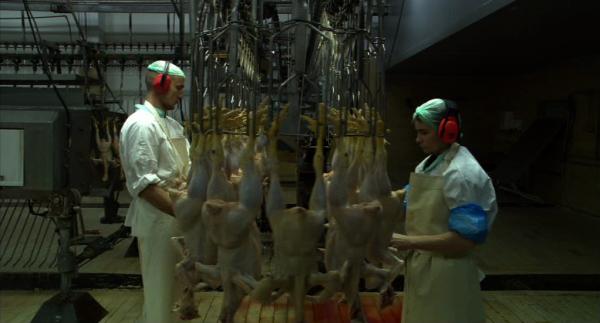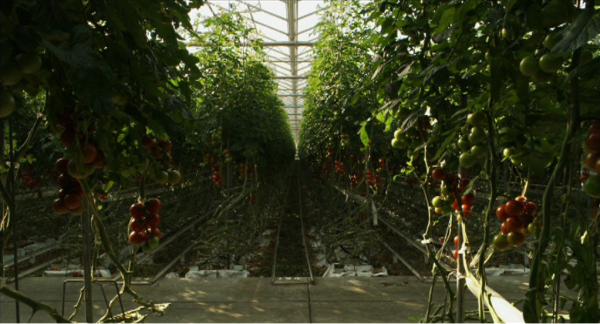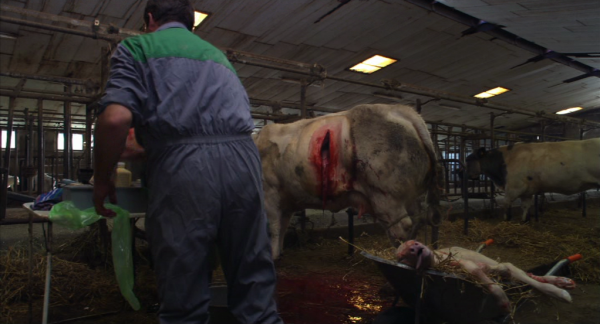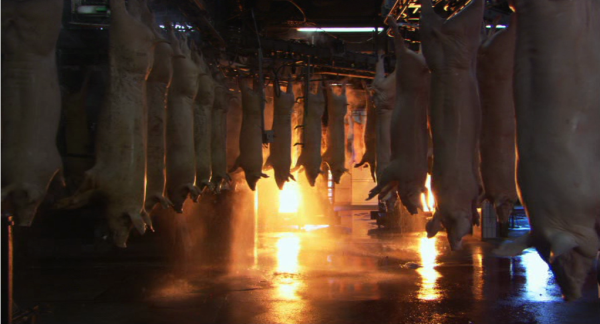Our Daily Bread (Nikolaus Geyrhalter, 2005)
Keep it as far away as possible, it will be more tolerable. Maybe. Almost nobody gets dirt on their hands nowadays. Everything must be aseptic. It starts with a worker spraying water on the floor to clean it from the blood of the carcasses that surround him and it ends with a worker disinfecting the room, after the blood has been spilled. In Franju’s Blood of the Beasts, workers in a slaughterhouse proceeded in killing, splitting, dismembering horses, cows, veals. The camera would focus on their eyes, or their blood spilling hot on the floor, as fumes rised up, their legs still moving even after removing the head. A voice would describe all the procedures. In Our Daily Bread, there’s a certain coldness, both in what’s portrayed and in the camera work. The camera is mostly static, apart from when it follows the movement of the machines on which it is mounted. The shots are geometrically organized. Almost everything is mechanized, automated, fast. If Franju’s camera would stay for long takes on the twisting carcasses, today there’s no time to do it. But the movie isn’t just random shots of industrial processes. Nikolaus Geyrhalter alternates the animal scenes with the vegetable scenes, along with the human scenes, where the employees eat their lunch and give quick glances towards the camera, almost creating a narrative scheme with its climaxes and its relaxed moments. There’s no soundtrack or voice comment. No need for it. This is contemplative cinema at his best. This is not a militant movie like Earthlings. There’s no truth revealed. Every viewer can come up with his ideas while watching Our Daily Bread. Someone can see horror, someone can see beauty. I see both.
The carelessness with which the workers discards the dead chicks by just throwing them in the trash without looking at them. The birth of a veal, that is immediately marked with paint as soon as he touches the ground. A worker eating her lunch, pretending that there isn’t a camera in front of her, and then the embarrassed glances that she gives at it. The way apples float, and their colors. How a worker gives instruction like a conductor or a magician, to another worker driving the bulldozer. The exchange of glances between a worker and a cow that tries to avoid the cattle gun that will soon kill it.
Our Daily Bread is an experience worth trying. It may disgust or fascinate you. It may change your view of the world, of what you eat, of what you want to be part of, or just not.













